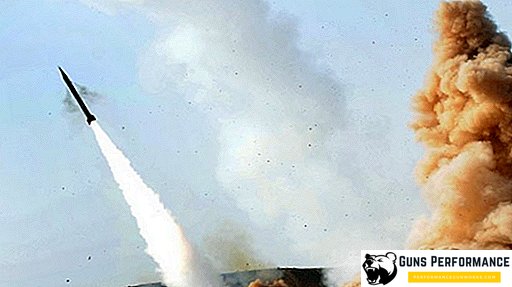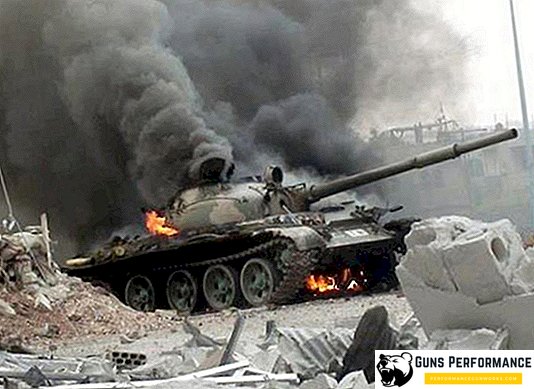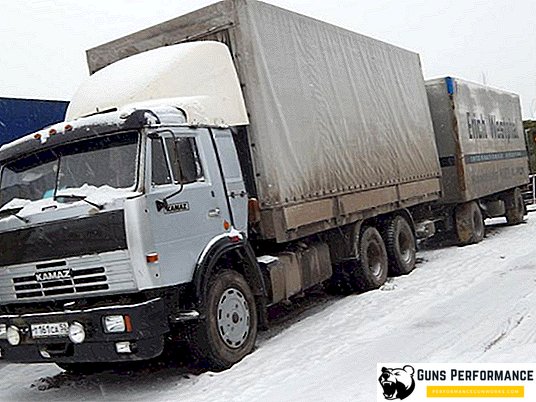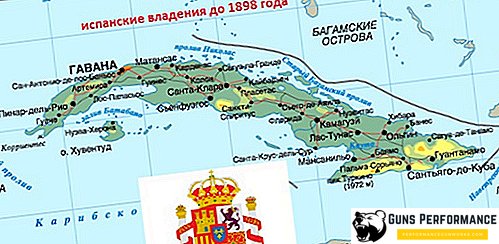People who follow the news feed often hear such words as a landmine, a high-explosive mine or high-explosive fragmentation in the description of emergency events and incidents. Today, in the heyday of the terrorist threat, not only adults, but children know what a landmine is. The high-explosive mine became the favorite weapon of terrorists, by means of which it is possible to keep the population of cities in fear, inflicting painful blows on objects of social and public infrastructure. Although literally some 20 years ago, similar terminology was the lot of the military, and in most cases we heard about land mines only in reports from the zone of military conflicts.
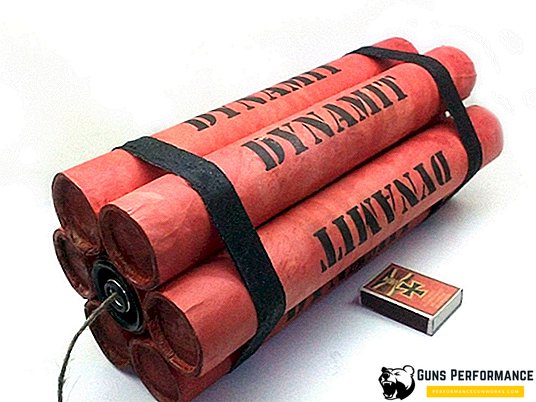
Despite the fact that the tactics of warfare has undergone significant changes, land mines continue to be used as a means of deterring the enemy offensive. Artillery of all calibers massively use fragmentation ammunition. Armored-fighting and high-explosive ammunition continue to remain on the equipment of tank units and VET forces.
The ability in a matter of seconds to cause great destruction and cause significant casualties makes the landmine the main weapon of destruction.
What is the difference between high-explosive charge and high-explosive projectile
It should immediately be said that an artillery shell, a mine or an aerial bomb is a device of ammunition, which may differ in the principle of impact, purpose and scope of application. However, in all the listed munitions laid one single principle - high-explosive action, i.e. striking effect. High-explosive can be both mines and shells. Any ammunition that contains an explosive is high explosive. It can be either a concrete-concrete or high-explosive projectile or anti-tank ammunition with a combined action.
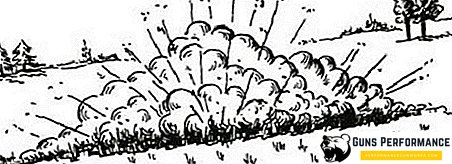
A high explosive charge is an engineering term that describes a certain amount of explosive used to explode. The blast wave in this case is the main striking effect. Secondary damaging factors in a landmine explosion are explosion products. Explosives may have a direct or indirect effect. As a rule, an electrical discharge, chemical reaction, fire method or mechanical action is used to drive the high-explosive charge. Electric spark, igniter cord are the main means of detonation of a stationary high-explosive charge, while the percussion mechanism, the ignition tube become detonators of directional ammunition. Explosives enclosed in a shell or container is already a certain type of ammunition, ready for use. The high-explosive projectile and a bomb are the main ammunition of artillery systems and aviation, the mine is the main firing engineering and technical means.
High-explosive shell. Operating principle
The main area of application of high-explosive ammunition is the destruction of buildings and structures, shelters and shelters for manpower. In the field and combat conditions - these are, as a rule, trenches and dugouts, brick and wooden structures and buildings. High-explosive artillery shells are most often used as a firing engineering tool used by large-caliber artillery systems. When a projectile hits a target, as a result of explosive explosion, a high-explosive effect on objects occurs. The power of the impact of ammunition on objects is determined by the explosive charge. High explosiveness characterizes the ability of explosives in a short time period to create a certain amount of explosion products that can have a destructive effect.
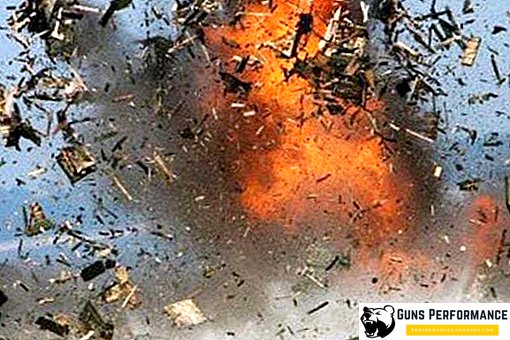
The more powerful the charge, the greater the pressure created on the surrounding air space, the shock wave is correspondingly stronger. In simple terms, a high-explosive action when a charge is detonated is manifested in splitting and in discarding the environment at the point of explosion. A distinctive feature of high-explosive shells is the specificity of the striking action. Under normal conditions, in open space, when a detonation of a high-explosive charge is generated, the shock wave diverges evenly over the entire radius of action, losing the intensity of impact on objects with increasing distance. When a charge is detonated in a confined space or in a limited area, the destructive action of a land mine increases. In comparison with other types of ammunition, high-explosive shells are significantly inferior in strength to the damaging factor.
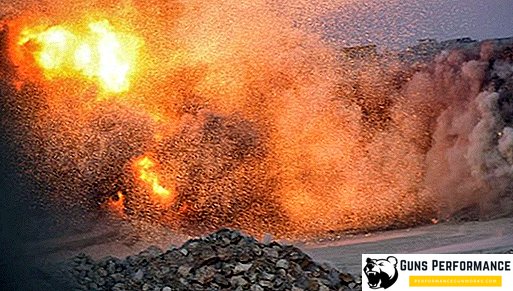
It should be borne in mind that the explosive charge may be different. The degree of explosiveness of each ammunition depends on the potential of the explosive (EX) and the specific energy released by it at the time of the explosion. The performance of explosives used to fill ammunition may be different. The strength and power of the explosion is influenced by the specific volume and composition of the gaseous products as a result of explosive detonation. It is rather difficult to accurately determine the actual working capacity of an explosive, therefore, the explosiveness of a certain explosive charge is usually expressed in relative units. As a rule, the explosive effect of explosives is compared with the result of a certain amount of TNT. The resulting explosion of the specific volume of products is measured in TNT equivalent.
Based on this data, we can conclude. The power of the high-explosive projectile is determined by the number and type of explosive. The increase in the number of explosives leads to an increase in the caliber of ammunition. More powerful explosives allow you to achieve the desired effect without increasing the caliber of the projectile. For example, for armor-piercing high-explosive anti-tank shells, the main thing is not a caliber, but a certain striking effect. Due to the large penetrating ability of such projectiles can penetrate deep into the armor, after which the high-explosive charge leads to its further destruction.
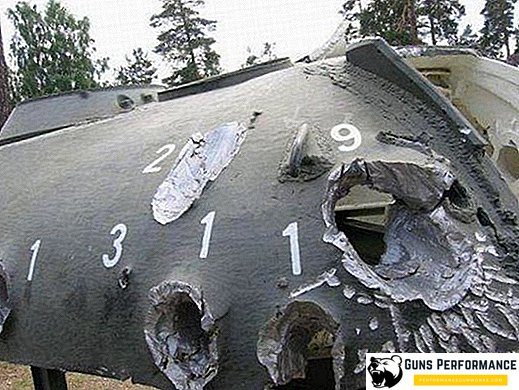
Unlike a high-explosive mine or a bomb, a shell is a strike ammunition. those. the high-impact action is preceded by a shock effect caused by the kinetic energy of the projectile's flight. The flight of the projectile may have a hanging or flat flight path. For the destruction of enemy personnel and for the destruction of defenses, howitzers and mortars are most often used. Tank guns and anti-tank artillery to combat armored vehicles mainly uses armor-piercing high-explosive shells. The main task that needs to be addressed in this case is the removal of armored vehicles by overcoming the armored protection.
Various types and types of high-explosive shells
Projectiles, mines, bombs, grenades are fire weapons of destruction and can have varying degrees of high-explosive action, primary or secondary. This determines the purpose of the munition, for what purpose is one or another projectile. In order to achieve a large destructive and damaging effect, shells are used in which the high-explosive action is the main one. High-explosive shells and bombs are used to destroy long-term structures and field shelters. To combat the heavy armored vehicles, landmines of the directional action, armor-piercing high-explosive shells are used. This type of ammunition is distinguished by the enormous kinetic energy possessed by the projectile fired from the barrel. Punching ability of armor-piercing projectiles is achieved due to the high speed of the projectile and the core made of durable metal alloy. Once in the armor plate, the shell destroys the surface layer, after which the high-explosive charge detonates, destroying the armor plate.
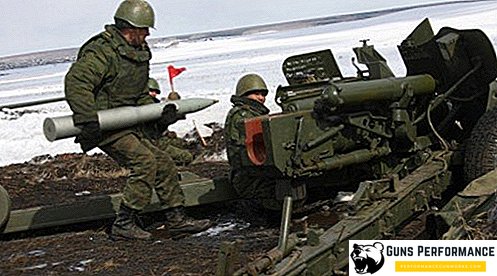
In those munitions, where the main purpose of their use is to achieve a certain result, the high-explosive action is auxiliary. Here the main focus is on other damaging factors. High-explosive shells, like hand grenades, are used to destroy manpower. The high-explosive action in this case serves as an auxiliary factor due to which the shell of the projectile is destroyed into small pieces. When undermining the fragments of the projectile or specially included in the composition of the ammunition fragments, receive enormous kinetic energy, becoming the main damaging factor.
High-explosive fragmentation shells are the main artillery fire weapon. This type of shells is the most massive. The main reason is the versatility of this type of ammunition. Using mini and projectiles of this type can simultaneously achieve not only the destruction of defenses and infrastructure, but also defeat enemy personnel. Unlike high-explosive ammunition, high-explosive fragmentation bombs and shells have a thick shell and have a smaller mass of explosive charge. In this case, the relative mass of the projectile itself is much higher.

Today, high-explosive shells are almost crowded out by high-explosive fragmentation ammunition. Modern types of shells possessed by artillery systems, allow to solve the full range of tasks on the battlefield. For the destruction of large defenses and long-term fortifications are used ammunition volume explosion. As for the armor-piercing high-explosive ammunition, they continue to remain on the equipment of tank units as the main means of destroying enemy armored vehicles. The appearance of cumulative ammunition significantly increased the tactical capabilities of anti-tank defenses. The land mine will long remain almost the main means of warfare on the battlefield.


